Odds & Ends: Ikoria
As is custom here in Making Magic, for every set, I do a mailbag column or two where I answer your questions about the latest set. Today, I'll be talking about Ikoria: Lair of Behemoths.
Here's the tweet I posted:
It's time for me to write a mailbag column about #mtgiko. Please keep your questions about Ikoria to a single tweet, one question per tweet. Thanks. #WotCStaff
— Mark Rosewater (@maro254) April 17, 2020
As always, I'll try to answer as many questions as I can, but here's why I might not answer your question:
- I have an allotted word count, which means that there are only so many questions I can get to.
- Someone else might have asked the same question. I will usually answer the first person who asks.
- Some questions I either don't know the answer to or don't feel qualified enough in the area to answer properly.
- Some topics I'm not allowed to answer for all sorts of reasons, including previews for future sets.
That said, let's get started:

Before Ikoria was previewed, I gave a little teaser online in the spirit of my old Duelist teasers where I give partial information about cards from Ikoria. Here's my teaser with the cards I was referring to:
- Magic's seventh Egg (Mysterious Egg)
- A card with the text "four or more times this game" (Yidaro, Wandering Monster)
- A card with the text "total power 10 or less" (Nethroi, Apex of Death)
- Magic's largest power- and toughness-granting aura. (Colossification)
- A card with the text "X is the number of times this creature has mutated" (Archipelagore, Auspicious Starrix, Huntmaster Liger, Insatiable Hemophage, and Porcuparrot; yes, I should have said a "cycle of cards")
- Magic's third and fourth card with "(Zero is even.)" reminder text (Extinction Event and Lavabrink Venturer)
- Three cards with the text "different name(s)" (Eerie Ultimatum, Emergent Ultimatum, and Lutri, the Spellchaser)
- Twelve different types of counters (+1/+1, bounty, deathtouch, flying, first strike, foreshadow, hexproof, lifelink, menace, reach, trample, and vigilance; there was actually a thirteenth counter type, loyalty, but it's not mentioned by name on planeswalker cards, which is why I missed it)
- A card that says, "choose a kind of counter at random" (Crystalline Giant)
- A card with the text "remove eight foreshadow counters" (Ominous Seas)
- And a cycle that players have been asking us to make for over ten years (the Ultimatums—Eerie Ultimatum, Emergent Ultimatum, Genesis Ultimatum, Inspired Ultimatum, and Ruinous Ultimatum)

One of the challenges of making a game with so many different worlds is that we want to be careful about delineating between those worlds. If we're not careful, the worlds can start overlapping in theme, which causes them to blend together and no longer feel unique. That was a big part of us choosing not to mutate Humans. You see, Ikoria is not the first monster world we've created. Magic has another monster world, Innistrad. And just like Ikoria, a lot of its source material comes from films and involves transformation. One of the delineations we chose to separate Innistrad from Ikoria is that all Innistrad's monsters evolve from Humans while all Ikoria's monsters evolve from non-Humans. Vampires, Zombies, Werewolves, Spirits—they were all once human. Ikoria's monsters never were. That's why.
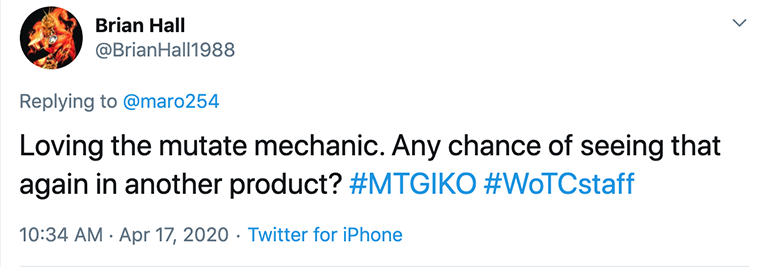
Mutate is a very complicated mechanic. That means it requires a lot of support from any set it's in. I could imagine a future supplemental set of a higher complexity level that makes use of old mechanics, like, say, Modern Horizons, that might contemplate using it. If we ever return to Ikoria, I think there's a decent possibility of it returning. Other than those two options, I think its chance of being in another set is currently low, but maybe if it's a smash hit, we'll reevaluate.
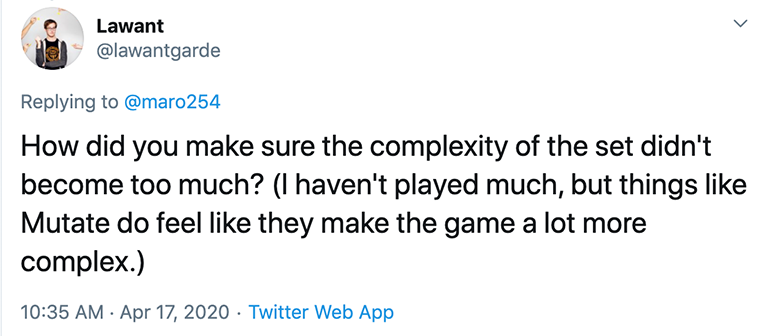
We were very conscious during vision design all the way through play design that mutate was a more complex mechanic. We focused on three big issues: one, how much fun was it; two, how flavorful was it; and three, how intuitive was it? We knew it was the kind of mechanic that would have a lot of weird corner cases, but after much playtesting, we felt it was something that added a lot to the set and chose to keep it in. It did require us being more careful with other things around it to lessen the complications it would cause, especially in Limited. I do plan to cover the larger complexity issues of the set in a future article.

Grusilda is a huge fan of mutate. In fact, mutate falls under the subset of "combined" creatures, so she does grant mutated creatures menace.

Let me see if I can explain. The Godzilla Series promotion involves nineteen cards. Each of these cards is an alternate-art version of Ikoria creatures featuring characters from the world of Godzilla. For purposes of explaining how you can get them, I'm going to break them down into three categories.
Category #1 (One card):
- Godzilla, King of Monsters (Zilortha, Strength Incarnate)
Godzilla, King of Monsters is the Buy-a-Box promo for Ikoria: Liar of Behemoths. The Buy-a-Box version is the only version of this card to appear in foil. Godzilla, King of Monsters does not appear as a box topper, which I will get to in a second, but does appear in the Ikoria Collector Booster only in a non-foil version. The Ikoria Collector Booster is the only place you can get a non-foil Godzilla, King of Monsters. Godzilla, King of Monsters is also the only card of the nineteen to not have an Ikoria version appear inside the set of Ikoria. It does have an alternate, non-Godzilla name (Zilortha, Strength Incarnate), but we have yet to print that version of the card.
Category #2 (Fifteen cards):
- Anguirus, Armored Killer (Gemrazer)
- Babygodzilla, Ruin Reborn (Pollywog Symbiote)
- Biolante, Plant Beast Form (Nethroi, Apex of Death)
- Bio-Quartz Spacegodzilla (Brokkos, Apex of Forever)
- Destroyah, Perfect Lifeform (Everquill Phoenix)
- Doral, the Perfect Pet (Sprite Dragon)
- Ghidorah, King of Cosmos (Illuna, Apex of Wishes)
- Gigan, Cyberclaw Terror (Gyruda, Doom of Depths)
- Godzilla, Doom Inevitable (Yidaro, Wandering Monster)
- Godzilla, Primeval Champion (Titanoth Rex)
- King Caesar, Ancient Guardian (Huntmaster Liger)
- King Caesar, Awoken Titan (Snapdax, Apex of the Hunt)
- Mothra, Supersonic Queen (Luminous Broodmoth)
- Rodan, Titan of Winged Fury (Vadrok, Apex of Thunder)
- Spacegodzilla, Void Invader (Void Beckoner)
These fifteen cards appear in all languages of the promotion. In all non-Japanese Ikoria product, these cards are the box toppers. You will find them packaged inside the Draft booster boxes with one card per box. As box toppers, they all appear in foil. These fifteen cards will also appear in Collector Boosters of the appropriate language in both foil and non-foil.
Category #3 (Three cards):
- Battra, Dark Destroyer (Dirge Bat)
- Mechagodzilla, the Weapon (Crystalline Giant)
- Mothra's Great Coccon (Mysterious Egg)
Three of the nineteen Godzilla Series cards exist only in Japanese and are exclusive to Japanese Ikoria product. (These three Japanese cards were originally planned to appear in English and French Ikoria Collector Boosters but unfortunately do not due to an internal error.) In Japanese product, all cards from the second and third category appear as box toppers, in foil, and in Draft boosters (one in twelve packs will have a non-foil Godzilla Series Monster card. One in 60 will have a foil Godzilla Series Monster card). You can also get them in Japanese Ikoria Collector Boosters both in foil and non-foil.

As we have art for it, I'm going to say its chances of one day seeing print are very high.
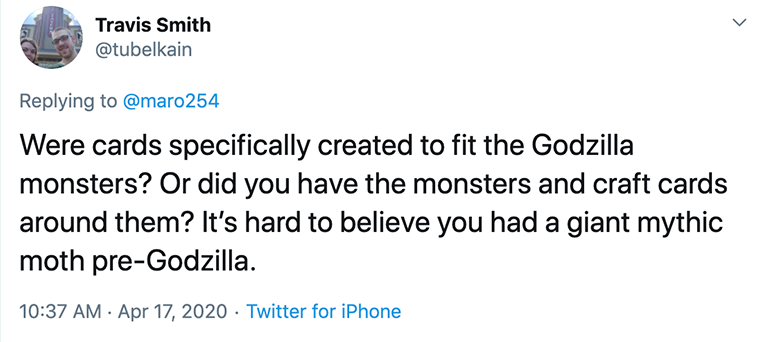
Sadly, the promotion happened late enough in set design that we didn't have the opportunity to specifically design cards to the Godzilla Series versions. We had to choose from existing cards in the set. Some happened to be perfect fits, and we were able to tweak a few, but yes, not all the cards were as ideal a fit as they could have been had we been able to design them top-down. The original file did have a gigantic moth, though.
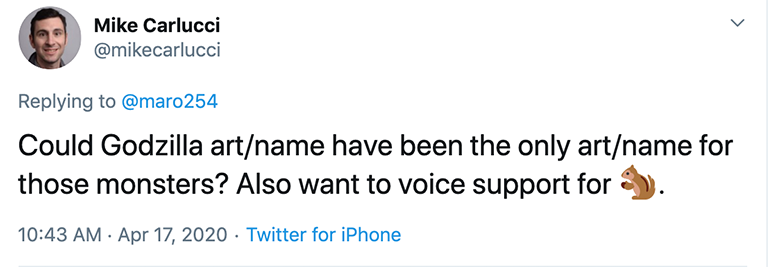
The idea behind the Godzilla Series promotion was that it was something that players could opt into (with the Buy-a-Box Godzilla, currently, the only exception), but wasn't required.
I am fully invested in getting more squirrels into black border.
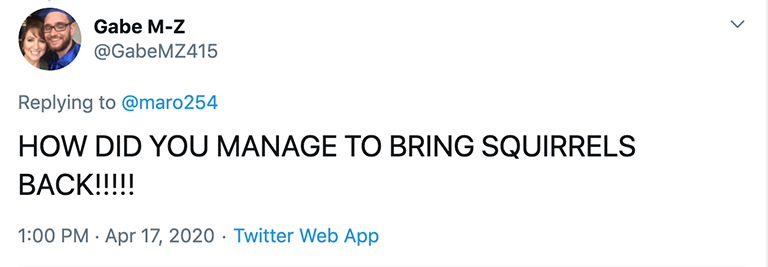
While I do feel I've done a lot to promote Squirrels within the game (through things like Un- cards and numerous black-bordered cards back in the day) and have helped foster a pro-Squirrel environment in R&D, I was actually not responsible for Ikoria getting its Squirrel. That was done by Doug Beyer. You see, he was given a creature to concept that needed to either get flying or first strike. Well, designing a creature that can sometimes fly is tricky. So, he thought of creatures that can glide. One of the ones that came to mind was a Squirrel. (Flying squirrels are a real thing—note that they glide and don't fly.) There's been a lot of talk about trying to get Squirrels back into black border (and not just by me), and Doug saw this as a fortuitous opportunity.
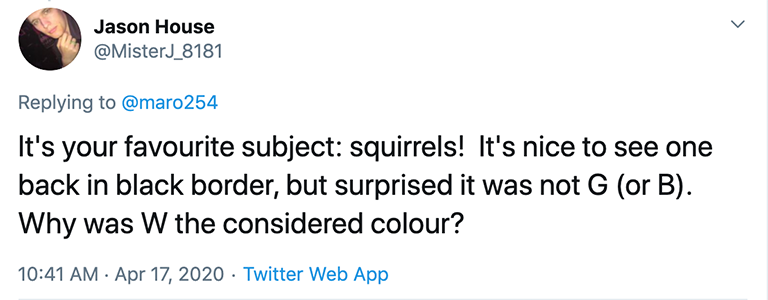
As my story above explained, the focus of the card wasn't that it was a Squirrel. The card wasn't designed to be a Squirrel, so no one focused on the colors. Yes, if we'd made a card to be a Squirrel, it would have been made green (and possibly black). As someone who's been trying to get Squirrels into black border for a long time, I was happy to see any card be a Squirrel. I just wanted to get people to be more accepting of black-bordered Squirrels. Trust me, if we can make this a somewhat regular thing, I promise we'll get more green (and black) Squirrels.

I've been fighting for this change for literally over twenty years, so I'm on board. All we have to do is convince the rest of R&D.
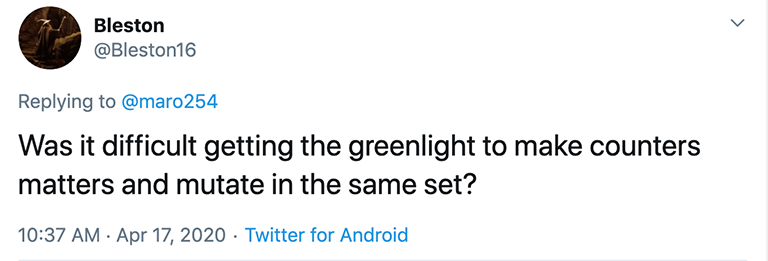
Interestingly, in vision design, mutate made use of keyword counters, so when I handed off the set, they both had to exist, as they were interconnected. During set design, when mutate changed and no longer needed keyword counters, there was talk of pulling them from the set. However, they played well with the "making monsters" theme and, while they carry some logistical weight, were very low on complexity, and the set was looking for flavorful, low-complexity mechanics to accompany mutate, which was eating up a lot of the complexity points.
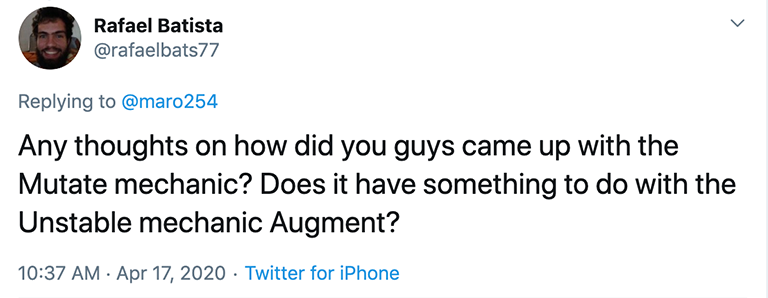
While augment came up, it wasn't really the inspiration for the mutate mechanic. We were trying to find a way to capture the concept of evolution through a mechanic, so we wrote down all the things we felt we needed to do that:
- A transformation
- A connection between the before and after
- A sense of an upgrade
- Improvement over time
We then explored all the mechanics that played in this space: champion, monstrous, transform, threshold, level-up, etc. Host and augment came up during this discussion, but it was more of a way to examine how we'd done things like this in the past. The mechanic that influenced us the most was probably champion. It was the mechanic we got to last time we'd explored this exact space. It didn't quite resonate with the audience, though, so we examined how to do a better champion. That's how we got to mutate.
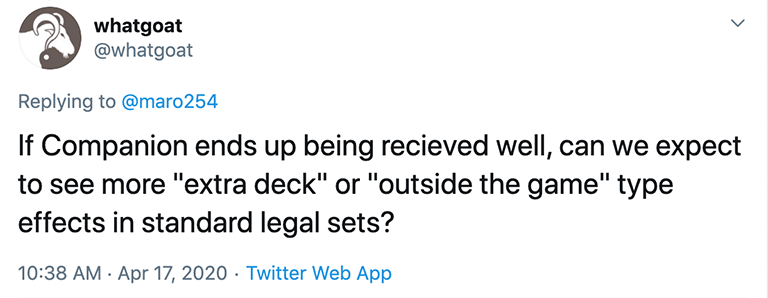
One of my game design truisms is "success breeds repetition." That is, when you do something and your audience likes it, you're more apt to do something similar in the future. Companion has proven to be a very polarizing mechanic online, so I'm interested to see how players feel about it once they've gotten a chance to play with it. If it ends up being popular, there's a pretty healthy vein of design we can explore.

Another of my game design truisms is "the greatest risk is not taking risks." What makes Magic "Magic" is that it's a dynamic game that's constantly changing and trying new things. Not everything works out, but that's okay. Magic can survive things that end up being problematic. Trust me—the game's history is littered with things that caused headaches. What's far more dangerous is us making sets that don't excite anyone. I'd much rather make a mechanic that's polarizing than make one that everyone forgets in a day. Will companion be an awesome creation or a horrible mistake? I bet a lot of people are going to play a lot of games to find out. Also, we've played a lot of games with it in R&D. It's pretty fun. We don't put things out if we don't see a lot of upside potential.
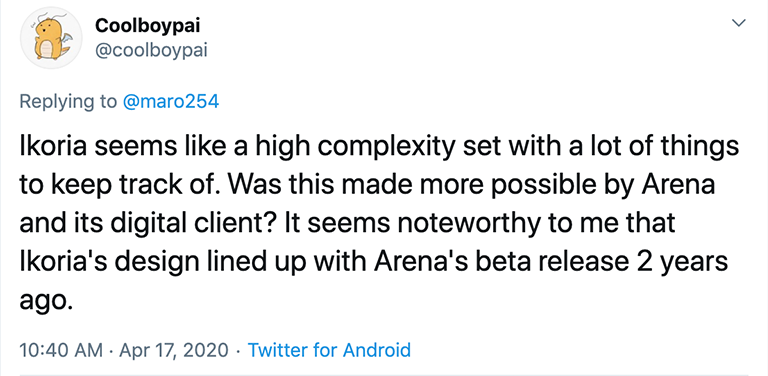
In some ways, yes, and in other ways, no. MTG Arena has become one of the two most popular ways for beginners to learn the game (the other being Commander), so yes, it has allowed us to relax things a little for beginners. That said, the reason we were willing to test out a higher complexity level in this set was more about the strong flavor tie to the world and its position in the Magic year (the last non-core set before rotation). In other words, we ended up coming to a more complex design because that's where the flavor of the world led us, and we were willing to give it a try because of where Ikoria falls calendar-wise. As I said above, I have an upcoming article that will delve more into this topic.
That's All for Today
I've used up my word count for today, which means it's time for me to wrap this up. Thanks to everyone who sent in questions. As always, I'm eager to hear any feedback, on my answers or on Ikoria itself. You can email me or contact me through any of my social media accounts (Twitter, Tumblr, Instagram, and TikTok).
Join me next week when I answer more of your questions.
Until then, may you make and play a lot of monsters.
#737: Richard Garfield
#737: Richard Garfield
33:18
For years, this has been the number-one request for a carpool guest for the podcast, but as Richard doesn't live near me, nor work at Wizards anymore, it's been an unobtainable goal. Thus, he seemed like a great guest for my at-home edition where...
#738: Donald Smith Jr.
#738: Donald Smith Jr.
30:07
Donald Smith Jr. is a member of the Play Design team, and I talk with him about what Play Design does.
- Episode 736 Matt Place, Part 2
- Episode 735 Matt Place, Part 1
- Episode 734 Chris Mooney

